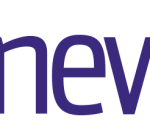Endeavour Energy uplifts finance forecasting
Endeavour Energy has turned to AI to boost its financial operations leading to improved forecasting and better business insights.

Francoise Merit, CFO at Endeavour Energy
Francoise Merit, chief financial officer at Endeavour Energy told a Gartner CFO and Finance Executive conference that results already seen include a drop in budget variance from around eight percent to one percent.
Merit said it was “imperative” to improve forecasting as the utility strives to meet urban growth demands, particularly in Greater Western Sydney, as well as the needs of large energy users such as data centre operators.
As CFO, Merit said she was tasked with implementing the likes of AI to boost forecasting capabilities.
“We did reflect and look for a solution that would help us to predict how much the network will be used in the future, how much [energy] residential and business side will use, and how we expect the grid to react,” she said.
“All of that led us to this work specifically in finance, so led by finance, which is how can we approach the forecast [process] very differently.
“In my department, we forecast … costs but also revenue. For us, revenue is linked to the number of electrons that transit on the grid”.
Following a tender process, the finance team introduced OneStream to improve enterprise operations and improve its forecasting capabilities.
“There is a different methodology that is built into this forecasting tool,” she said.
“We can change from month to month which driver we want to flex or which one we want to die down because the environment is changing.”
Merit said the platform enabled finance to maintain its independence, not having to rely on data science or IT for resourcing.
It also enabled a reduction of key person risk. “Suddenly, forecasting was not on one person’s shoulders,” Merit said.
She said that the “change management piece was critical” to the project, particularly as it involved an element of AI.
The tool was positioned as an “opportunity for development”, which Merit said was embraced.
“[Our team] saw [it as] an opportunity on how they can become more relevant to the business – to not be seen as backoffice,” she said.
Implementation took about 12 weeks and had produced strong results “even after a short period” of time.










